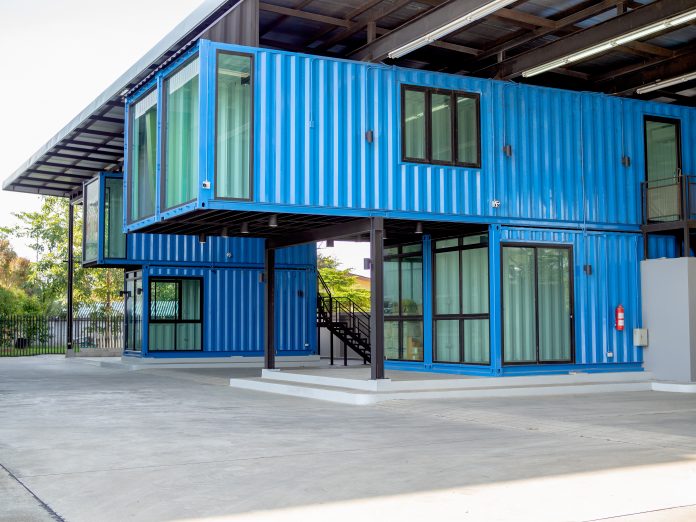Johnathan Bulmer, MD at Cleveland Containers, explains how shipping containers are supporting capacity efforts during coronavirus
Logistics has slowed over the last few months, with supply chains being affected by the relentless impact of the coronavirus. Shipping containers are often associated with the logistics industry – understandably. But they’re also very versatile, being used in the hotel, food, construction and retail industries, among many others. As the nation’s behaviour changes, shipping containers are well-positioned to adapt to this. Sectors which need the mobility that shipping containers can provide are turning to them as a creative method to help support space and capacity issues.
ICU Support
Demand for healthcare has been significantly hastened by the pandemic. Hospitals need to keep up with cases accelerating in some countries, and can run into capacity issues.
In particular, Intensive Care Units (ICU) beds are in demand, with researchers estimating that the UK will need 200 beds per 100,000 people while the current UK capacity is under 7 per 100,000.
Some architects have created plans to offer a mobile, temporary alternative for ICUs. Just take a look at this video which shows how shipping containers can be turned into hospitals to treat COVID-19 patients.
The RUAG Field Hospital involved an international network of architects and engineers who joined forces to convert shipping containers into intensive care units which hold two beds. It combines standard ISO shipping containers with expandable containers, allowing field hospitals to be built in record time.
Another design which has been given funding to develop its first prototype is named the CURA – Connected Units for Respiratory Ailments. In the same way in which pop-up shops and co-working spaces can be turned around quickly, the CURA sees all equipment and features of an intensive care unit placed inside a 20-foot container. This can then be shipped or taken anywhere, and ready to help healthcare officials in mere hours – a great flexible option for when you need to scale up. They have received funding to develop the first prototype and it’s currently being manufactured in Italy.
While the field hospitals being built overnight in exhibition centres is fantastic, Chinese authorities found that there can be problems with the intense concentration of contaminated air. While prefabricated hospitals can instead have full mechanical ventilation, in addition to negative pressure systems.
Housing for Hospitals
Another global issue which is facing the healthcare system is the housing for hospital staff, with many officials staying in the institution for distancing measures. Yet there are deficits globally, and one US-based architecture firm has created an innovative way to tackle this accommodation shortage.
Three Squared is now offering its cargo containers as climate-controlled housing units for doctors and nurses to stay in. This means that hospital staff can remain close to patients who need them most, but also maintain necessary social distancing and hygiene protocols since they even have electrical and fully-equipped bathrooms in the state-of-the-art container dwellings.
Prison safety
Prisons have become a hot-bed for coronavirus contamination in recent weeks, with more than 1,000 cases in UK institutions. In the UK, 500 temporary prison cells are being made from steel shipping containers, with more expected to be built if demand continues.
They will be built in a prefabricated manner into the grounds of seven prisons, in an effort to prevent the spread of the virus in these locations where it’s harder to maintain social distancing. Work has begun on HMP North Sea Camp along with others in Moorland, Lindholme and Huber, according to the Ministry of Justice.
Social distancing requires more space in areas like hospitals and prisons, but you can’t build extensions overnight. You can, however, use temporary measures such as shipping containers, which have been used in industries such as construction for years. What the landscape will look like after the pandemic passes is unclear. But temporary changes which allow key institutions to be flexible can help to create a new normal for reactive relief efforts.





![Europe’s housing crisis: A fundamental social right under pressure Run-down appartment building in southeast Europe set before a moody evening sky. High dynamic range photo. Please see my related collections... [url=search/lightbox/7431206][img]http://i161.photobucket.com/albums/t218/dave9296/Lightbox_Vetta.jpg[/img][/url]](https://www.openaccessgovernment.org/wp-content/uploads/2025/04/iStock-108309610-218x150.jpg)





